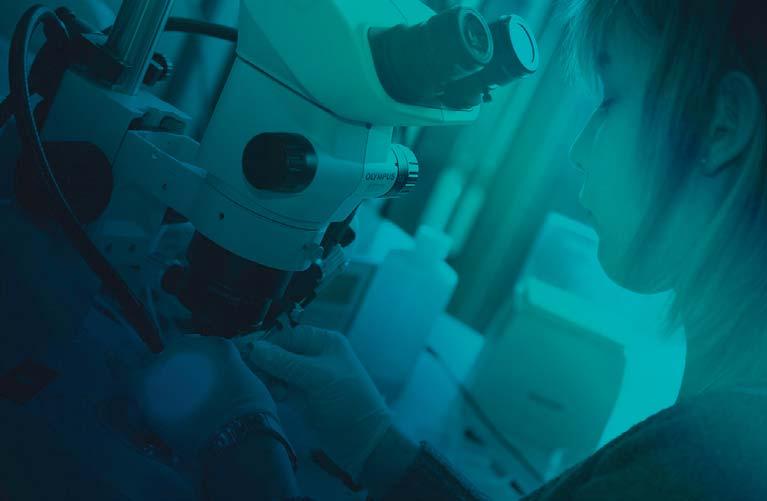Towards a holistic approach of risk assessment and management
g I
n
n
o
v
a
t
i
o
n
T e
c
h
n
o
l
o
Interview with Ir. Rose DETAILLE, Managing director of ISSeP fields can detect exposure sessions with a significant success rate. The ENVI-EHS project uses an innovative protocol developed in the ExpoComm project funded by Anses (France). The protocol was developed and validated with the participation of people considering themselves as hypersensitive during co-creation workshops. Recruitment of volunteers will start at the beginning of 2021. Results are expected by the end of the year.
W
hat are ISSeP's key missions? ISSeP (Institut Scientifique de Service Public) is the Walloon reference laboratory specialized in environmental monitoring (i.e. water, air, soil, sediments and waste) and risk assessment and prevention. ISSeP draws on the scientific expertise of 300 agents from various area of expertise, from field sampling, lab analysis, numerical modelling, geostatistical analysis to Earth observation. Environmental monitoring activities rely on a 30-person team for samples collection and on 4 analytical laboratories in mineral chemistry, organic chemistry, microbiology and ecotoxicology. These monitoring activities cover ambient air quality network, the control of polluting emissions from 53 industrial facilities pollutants emissions control, the physicochemical, microbiological and ecotoxicological analysis of surface and groundwater as well as sediments, contaminated sites analysis and landfill sites monitoring.
What other examples of ongoing research projects can you give us? Firstly, the Antibiobug project which investigated the presence of the antibiotic resistant E. coli bacteria in two watercourses in Wallonia. An initial inventory of the extent of the phenomenon was established and reported to the FPS (Federal Public Service) Public Health in order to set up an action plan. In 2021 it will be complemented by the Antibiobug 2 project focusing on the presence of antibiotic resistant E. coli in bathing waters as they can pause a direct risk to human health. Besides we are currently working on indoor air quality in schools: 294 CO2 and pollutants sensors were distributed to 166 schools in order to investigate the impact of outdoor pollution on indoor air, the ventilation efficiency and the presence of pollutants in the classrooms. The final results are expected in June 2021. © ISSeP
y
Scientific Institute of Public Service - ISSeP
Whilst ISSeP’s missions were firstly confined to providing environmental characterization data, its missions now have evolved to run forecasts and assess accidental and chronic risks (i.e. asbestos, electromagnetic fields…). Our risk assessment studies tackle impact assessment on ecosystems, with for instance fish and invertebrates monitored in the BIOTE network, as well as human health exposure through biomonitoring projects and geostatistical approaches. ISSeP skills have also evolved, with for instance land use change monitoring by Earth observation methods. ISSeP experts are also supporting the sectors in which waste is destined to become a resource.
Could you tell us about the Walloon biomonitoring programme to measure the presence of pollutants in the human body? Phase 1 of the Walloon biomonitoring included 828 participants, amongst which 284 new-borns, 283 teenagers and 261 young adults. It will provide reference values for new-borns, teenagers and adults exposure to a number of substances or groups of substances including certain metals, polyaromatic hydrocarbons (PAHs), bisphenol and pesticides such as pyrethrinoids, organophosphates and glyphosate. The results are currently being analysed and are expected in the first quarter of 2021. A statistical analysis will be carried out to detect correlations between specific behaviour, socioeconomic indicators, living places, etc. In phase 2, the objective is to recruit 300 children aged 3 to 5 years old, 300 children aged 6 to 11 and 300 adults aged 40 to 59 in order to establish Walloon reference exposure values for these age categories.
These different missions are based on extensive scientific research which enables us to build our expertise in environmental characterisation as well as in risk assessment and management. We are currently involved in 52 research projects, 14 of which focus on the links between health and the environment - a hot topic especially in times of health crisis. Moreover, ISSeP is incorporating more and more citizen science projects. These are most likely to raise environmental awareness since participants will both benefit from and contribute to science education. Could you tell us about the ENVI-EHS study on exposure to electromagnetic fields? The ENVI-EHS study will contribute to improve knowledge of hypersensitivity to electromagnetic fields, also known as idiopathic environmental intolerance attributed to electromagnetic fields (IEI-CEM). This project is a part of the Walloon environmental health plan (ENVIeS) and consists of carrying out double-blind provocation tests on volunteers. The aim is to assess whether people who self-identify as hypersensitive to electromagnetic
Could you present us the new website www.Wallonair.be? ISSeP manages the Walloon air quality monitoring networks and returns the data to AwAC (Walloon Air and Climate Agency). The former website that published ambient air quality data in Wallonia (http://airquality.issep.be) was redesigned to meet current web uses. Launched on the 11th of September 2020, the 106

















































































































